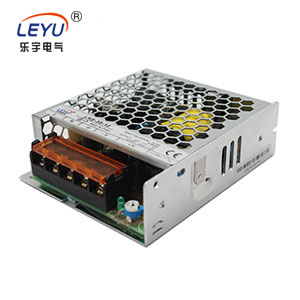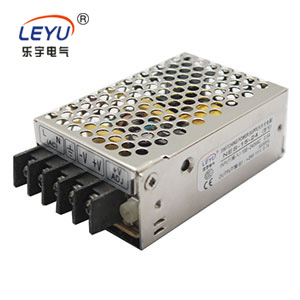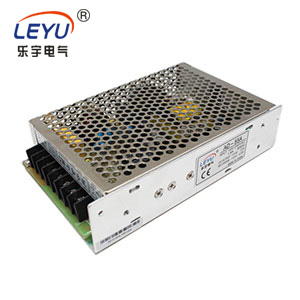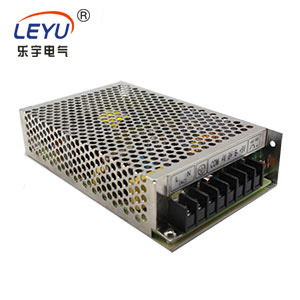How to Choose the Right Power Inverter: Square-wave vs. Modified vs. Pure Sine Wave
Date:2025-06-23 04:45:10 Visit:461
Choosing the correct power inverter is essential for maintaining your electrical devices' performance, safety, and longevity. Depending on your system's power quality requirements, you can select a square wave, modified sine wave, or pure sine wave inverter for residential, commercial, or off-grid applications.
What is a Power Inverter?
A power inverter is an electrical device that converts direct current (DC), typically from batteries or solar panels, into alternating current (AC), which is used by most household appliances and industrial equipment.
Inverters are crucial in:
- Solar energy systems
- Off-grid and backup power solutions
- Electric vehicles
- Recreational vehicles (RVs)
- Uninterruptible power supplies (UPS)
Why Inverter Type Matters
Each inverter type creates a different waveform, directly impacting electrical device compatibility. Poor waveform compatibility can lead to:
- Reduced appliance lifespan
- Electrical noise or humming
- Malfunction or failure of sensitive electronics
Overview of Inverter Types
Inverter Type
Power Quality
Cost
Best Use Cases
Square-Wave
Low
Low
Simple resistive loads (incandescent bulbs, basic tools)
Modified Sine Wave
Medium
Moderate
Non-sensitive household electronics
Pure Sine Wave
High
Higher
All appliances, especially sensitive ones
Square-Wave Inverters
Description:
Square-wave inverters produce a simple, abrupt wave that changes polarity instantaneously. They are outdated and rarely used today except in basic, rugged applications.
Pros:
- Inexpensive
- Simple design
Cons:
- High harmonic distortion
- Not compatible with most modern electronics
- Can overheat or damage inductive loads
Best For:
- Low-end resistive loads (light bulbs, old fans)
- Emergency-only or temporary applications
Modified Sine Wave Inverters
Description:
Modified sine wave inverters produce a stepped approximation of a sine wave. They're a popular middle-ground between performance and cost.
Pros:
- Affordable
- Sufficient for many standard appliances
- Widely available
Cons:
- Can cause buzzing in audio equipment
- Motors and microwaves may perform less efficiently
- Slightly higher power consumption than pure sine wave
Best For:
- Power tools
- Low-end consumer electronics
- RV appliances, simple home backup systems
Pure Sine Wave Inverters
Description:
Pure sine wave inverters generate a clean, smooth waveform identical to utility-supplied AC power. These are the gold standard for powering all types of electronics.
Pros:
- Compatible with all appliances
- No electrical noise
- Highest efficiency and safety
- Extends the lifespan of equipment
Cons:
- Higher initial cost
- Requires more sophisticated design
Best For:
- Computers, TVs, and medical equipment
- Home solar systems
- Industrial applications
- Devices with variable-speed motors or sensitive timing circuitry
Comparison Table: Square vs. Modified vs. Pure Sine Wave
Feature
Square-Wave
Modified Sine Wave
Pure Sine Wave
Cost
Low
Medium
High
Power Quality
Poor
Moderate
Excellent
Harmonic Distortion
Very High
Moderate
Very Low
Noise and Heat
High
Moderate
Minimal
Appliance Compatibility
Limited
Moderate
Universal
Efficiency
Low
Medium
High
Safety for Sensitive Devices
No
Occasionally
Yes
Factors to Consider Before Choosing an Inverter
1. Application Type
- Home backup power
- Off-grid solar
- RV or mobile usage
- Industrial or critical systems
2. Device Sensitivity
- CPAP machines, laptops, and LED TVs require pure sine waves.
- Heaters or incandescent lights can tolerate modified or square waves.
3. Wattage Requirements
Calculate the total running wattage and peak/surge wattage of all devices. Choose an inverter that can handle at least 25% more than your total load.
4. Battery Bank & Voltage
Ensure the inverter matches your battery bank voltage (e.g., 12V, 24V, 48V). Also, verify that the inverter is efficient at your system's current draw level.
5. Budget Constraints
A modified sine wave may be acceptable if the budget is tight and your devices are not sensitive.
Use Case Scenarios
Use Case
Recommended Inverter
Emergency backup for fridge
Modified or Pure Sine Wave
Medical equipment (CPAP)
Pure Sine Wave
Solar home installation
Pure Sine Wave
Power tools in a workshop
Modified Sine Wave
Incandescent lighting
Square-Wave
Frequently Asked Questions
Q1: Can a modified sine wave inverter damage my electronics?
A: Yes, it can. Especially sensitive electronics, motors, or audio equipment may experience wear or performance issues.
Q2: Why are pure sine wave inverters more expensive?
A: They use more complex internal electronics to produce clean, smooth AC power. This reduces noise, increases efficiency, and extends appliance lifespan.
Q3: What happens if I overload my inverter?
A: Most quality inverters include overload protection. However, exceeding rated wattage can trigger shutdown or permanently damage the inverter.
Q4: How do I choose the right inverter size for solar panels?
A: First, find out how much power (in watts) your devices use at the most. Add 25% more to handle power surges. Also, make sure the inverter voltage matches your battery (12V, 24V, or 48V).
Conclusion
Choosing the right inverter depends on the devices you plan to power, your application's requirements, and your budget. While square-wave inverters are largely obsolete, modified sine wave models serve basic needs well. For full compatibility and peace of mind, pure sine wave inverters offer the best performance and safety for all modern electronics.
Always size your inverter carefully, consider your energy usage, and plan for future expansion if your power demands grow.

Sine wave inverter








